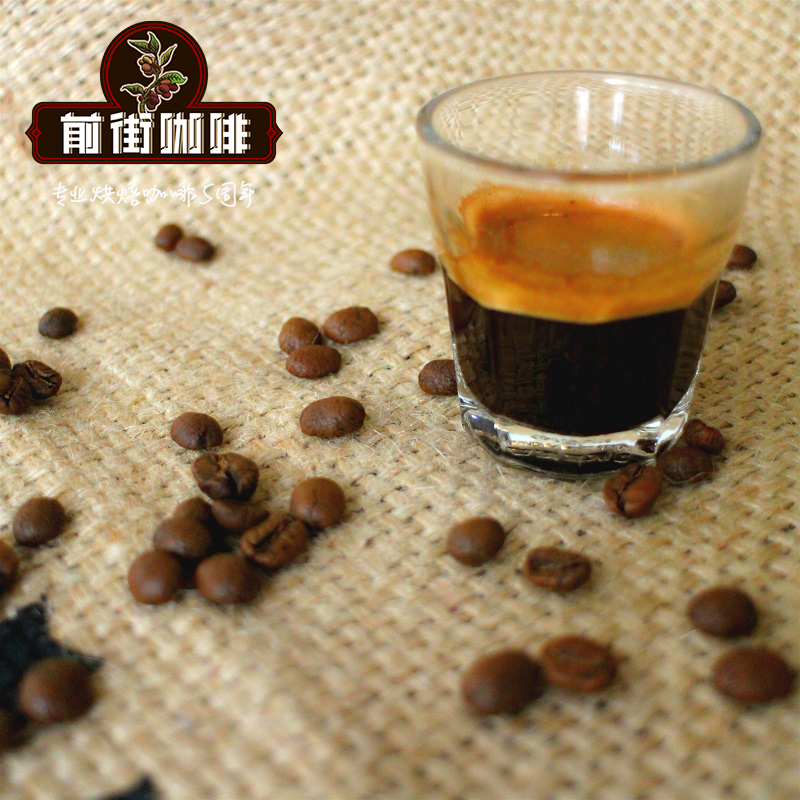Flavor characteristics of coffee beans in Latin America is the price of coffee beans expensive in Latin America

Professional coffee knowledge exchange More coffee bean information Please pay attention to coffee workshop (Weixin Official Accounts cafe_style)
Flavor characteristics of Latin American coffee beans
Taste characteristics: balanced, moderate acidity and mellow
Central and South American Bean Flavor: Overall, the flavor is quite normal. Brazilian coffee is soft and sweet, Costa Rica coffee is mild and soft, sour, sweet and chocolate blend together, extremely balanced.
The overall flavor of Latin American coffee is known for its balance, and all the flavors in coffee can be found in Latin American coffee. The widespread use of wet processing of green beans is also one of the characteristics of Latin American coffee, good processing also makes its beans larger and more uniform than African coffee, and the defect rate is also lower.
[Representative]:
Colombia
Colombia is one of the world's largest producers of high-quality coffee, a shining pearl on the world coffee map, and a coffee land blessed by God. Arabica coffee is grown on steep slopes at 800 - 1900 meters above sea level in the foothills and is hand-picked and washed.
Colombia coffee has a balanced flavor and a smoother taste, just like a gentleman in coffee. He has a wide range of producing areas, most notably Medellin, Armenia and Manizales, which are customarily referred to as MAM.
Colombia's fine bean producing areas are mainly in the south, above 1500 meters above sea level, including San Augustin, Huila, Popayan, Cauca, Nariño and Tolima, where the products have delicate sour and berry aromas, caramel aroma and sweet feeling.
[Cauca Cauca] is a certified coffee producing area in Colombia, with an average altitude of 1758m-2100m. Cauca Province is 80% mountainous. The soil in the producing area prepares sufficient nutrients for coffee growth. The low temperature at night and relatively higher altitude slow down the growth rhythm of coffee. Coffee in Cauca producing area has excellent acidity and praised sweetness.
[Colombia]-Sucrose, clean, medium-bodied, processed in the traditional way: hand-picked coffee cherries, then the coffee cherries are subjected to the traditional washing process, and the processed coffee beans are placed in the sun to dry. We use medium roast this bean,[flavor] has mild plum acidity and balanced nutty, caramel back sweet, clean taste
El Salvador
Salvadoran coffee is also very high quality, and unique flavor: strong sense of balance, fresh and lively, mild taste, sweet and pleasant, can be described as "pure natural flavor". This is due to the fertile soil, suitable altitude, good climate, planting techniques passed down from generation to generation and excellent tree species.
[Salvador Pacamara](washed medium roast)-nuts chocolate, passion fruit, cream, strawberries, the national average altitude is high, such geographical environment is very conducive to coffee growth, farmers use traditional cultivation methods: almost 100% shade cultivation. Pacamara is an artificial breed of Pacas and Maragogipe, Pacamara is a rare excellent breed under artificial breeding.
Maragogype A mutant of Typica, first discovered in Brazil in 1870. The fruit is large, long and somewhat twisted, and the plant has long internodes and large leaves. Production is relatively low.
Pacas: In 1935, Salvadoran coffee farmer "Don Alberto Pacas" selected a high-yield San Raymond bourbon variety and planted it on the farm. In 1956, his coffee tree produced more fruit than the same kind of coffee tree. Professor "Dr. William Cogwill" of the University of Florida identified this as a genetic mutation in bourbon and named it "Pacas". Pakas high yield, good quality, very popular in Central America.
Guatemala
● Taste characteristics: bitter and fragrant, good taste.
Guatemala is a coffee producing area that cannot be ignored and is a typical representative of coffee flavor diversity. Guatemala SHB (hardest bean) is almost universally known as synonymous with high quality coffee. This is because there are more than 300 micro-environmental climates, tall mountains, the Pacific Ocean, the Atlantic Ocean, huge volcanic lakes, Mexican plains... and rich geographical climate resources.
Slightly sour and mellow and smooth, is the best material for mixed coffee. It is classified into seven grades according to altitude. The higher the yield, the more fragrant the coffee beans are, while the lower the yield, the lower the quality.
Elevation classification: Like many other Central American countries, Guatemala has its own elevation classification for coffee growing. The higher the altitude, the slower the growth and maturation. Therefore, the higher the density of raw beans, the higher the quality.
Prime: Planting altitude 750 m ~900 m
Extra Prime: Planting altitude 900 m ~1050 m
Semi Hard Bean: Planting altitude 1050 m ~1220 m
Hard Bean (HB): Planting altitude 1220 m ~1300 m
Strictly Hard Bean (SHB): Planted above 1300 meters
[Guatemala]--Guatemala's nutrient-rich volcanic ash, high altitude and relatively low average temperatures all give the coffee a clean sweet taste and bright acidity. Atitlan's soil is rich in organic matter. This [White Honey] impressed me most is the longan juice. It tastes soft and smooth, which is very different from the smoky taste of other Guatemala.
Bolivia
The tropical rainforest environment in some parts of Bolivia provides excellent natural conditions for the growth of organic coffee. Bolivian coffee aroma rich and unique, whether it is the aroma of beans after grinding or the aroma of coffee made are quite obvious, similar to the mixture of floral and fruit aroma, perfect nutty flavor impressive.
[Lake Titicaca in Bolivia](washed and moderately baked)---Dry aromas of roasted nuts and almonds, soft fruit acids of orange and white pomelo, sweet caramel, smooth texture of nut milk, cleanliness and balance are also quite eye-catching, and the herbal aroma of the aftertaste is quite charming.
Breed: Iron pickup, one of the oldest native breeds, from which all Arabica is derived. Tiebika has bronze top leaves, oval or thin pointed bean body, elegant flavor, weak constitution, poor disease resistance and low fruit yield. Jamaica Blue Mountain, Sumatra Mantning, Hawaii Kona and other excellent estate beans belong to Tibika.
Panama
Panamanian coffee is famous all over the world for its summer, and the reason is inseparable from Panama's unique natural geographical conditions. Panama coffee has a unique quality because of its microclimate. Panama borders Costa Rica and Colombia, and the east-west environment allows cold air currents to flow through the central mountains to converge above 6500 feet, creating a very unique microclimate in the Boquete and Volcán Candela regions, making it a major producer of Panamanian coffee. The surrounding soil is rich in nutrients, and these fertile soils provide the perfect conditions for coffee growth, shaping a large number of unique, high-quality coffee.
Boquete: This is the Panamanian region we know best. The special mountainous terrain of this area forms a very suitable microclimate for coffee cultivation. Cultivated varieties: Tibika, Kadura, Kaduai, Bourbon, Rose Summer,[Flower Butterfly] contains 40% rose summer seed, a bean with high cost performance, classic rose summer flower fragrance, moderate coffee body, smooth taste, delicate acid fragrance, balanced taste value, plus caramel, chocolate, citrus and jasmine.
Costa Rica
Costa Rica's high latitudes produce coffee beans that are famous in the world for their rich, mild taste, but extremely sour, and the beans here are carefully processed to produce high-quality coffee. Costa Rica is located south of San José, the capital of Tarasu, and is one of the country's most valued coffee plantations. Costa Rica has a total of eight producing areas, of which it is recognized as the three best producing areas, Tarazhu, Central Valley, Western Valley, Las Lajas is located in Sabanilla de Alajuela in the Central Valley producing area, and the foothills of Poás Volcano.
[Costa Rica Tarrazu Manor](washed in deep roasting)--soft orange, toast, caramel cocoa sweet, Canet Manor, located in Costa Rica Tarrazu coffee growing area, this area is Costa Rica's most fruit growing area. The manor owner mainly grows passion fruit, and the amount of coffee is quite small. Coffee is only grown in a special area.
[Raisin Honey Process]: Raisin treatment method, first the coffee fruit into a state of raisins, then peel honey treatment fermentation, fermentation flavor will be more intense, and pectin preservation than other honey treatment is higher, known as 100% pectin honey treatment really has raisin flavor. This is a very sweet treatment, with the taste of white wine and balanced acidity, the fermentation flavor will be more intense, and pectin preservation is higher than other honey treatment, a bit like "noble rot wine" sweet wine, honey, preserved apricots, raisins, peaches and other flavors
Latin American coffee beans
Front Street Coffee roasts all types of Latin American coffee beans with full assurance of brand and quality. More importantly, the cost performance is extremely high, a pack of half pounds 227 grams, the price is only about 80-100 yuan. According to the calculation of 15 grams of powder per cup of coffee, a pack can make 15 cups of coffee, each cup only costs about 5 or 6 yuan, compared with the price of hundreds of cups sold in cafes.
Important Notice :
前街咖啡 FrontStreet Coffee has moved to new addredd:
FrontStreet Coffee Address: 315,Donghua East Road,GuangZhou
Tel:020 38364473
- Prev

How to taste a cup of Latin American black coffee? How much is Latin American coffee?
Professional coffee knowledge exchange More coffee bean information Please pay attention to coffee workshop (Weixin Official Accounts cafe_style) Many students study here, always ask a question, why coffee introduction should start from black coffee, even from tasting single coffee as the basis; some students think black coffee learning is not important. Here's an explanation: because coffee learning is ultimately
- Next

What's the story between Latin American coffee and Starbucks? how much is a cup of Latin American coffee?
Professional coffee knowledge exchange more coffee bean information please follow Coffee Workshop (Wechat official account cafe_style) Latin America coffee bean producing region LATIN AMERICA began to grow coffee trees in Latin America in the 18th century, the region is composed of colorful world flow, the largest watershed, the largest tributaries and the first longest Amazon River. Give birth to the colorful ecological appearance of the rainforest. Own
Related
- Does Rose Summer choose Blue, Green or Red? Detailed explanation of Rose Summer Coffee plots and Classification in Panamanian Jade Manor
- What is the difference between the origin, producing area, processing plant, cooperative and manor of coffee beans?
- How fine does the espresso powder fit? how to grind the espresso?
- Sca coffee roasting degree color card coffee roasting degree 8 roasting color values what do you mean?
- The practice of lattes: how to make lattes at home
- Introduction to Indonesian Fine Coffee beans-- Java Coffee producing area of Indonesian Arabica Coffee
- How much will the flavor of light and medium roasted rose summer be expressed? What baking level is rose summer suitable for?
- Introduction to the characteristics of washing, sun-drying or wet-planing coffee commonly used in Mantenin, Indonesia
- Price characteristics of Arabica Coffee Bean Starbucks introduction to Manning Coffee Bean Taste producing area Variety Manor
- What is the authentic Yega flavor? What are the flavor characteristics of the really excellent Yejasuffi coffee beans?

